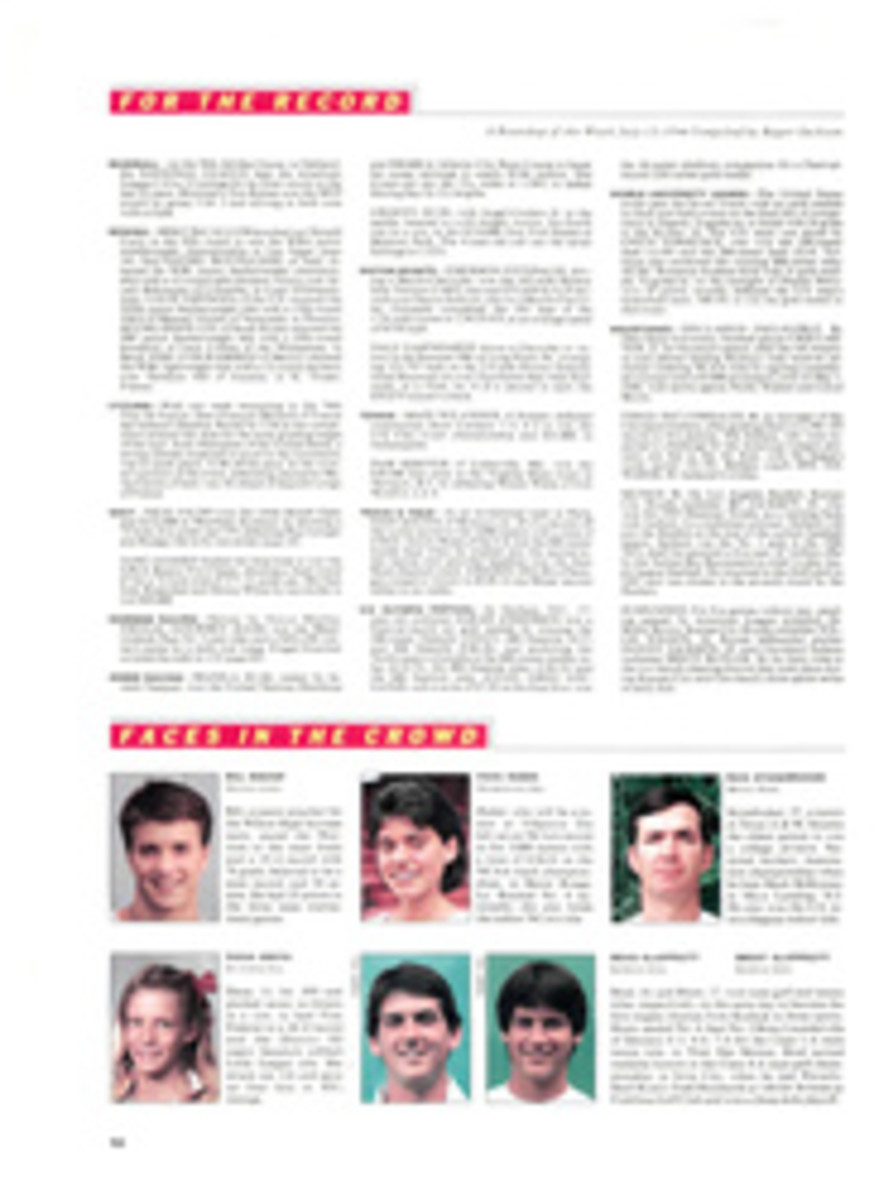
RABBIT BALL: WHODUNIT?
The question is very simple: If the baseball is juiced up, who's responsible? It's like Nicaragua: If the money got there from Iran, somebody—some person, some human being—must be behind it. Who? That's why we're having a congressional investigation. But the same sensible, logical folks who seek to get to the bottom of the arms-sales business see all the home runs being hit in the major leagues, and right away they start moaning that there sure is a rabbit inside the ball. O.K., so how did the rabbit get in there? And why?
In all the world there are only so many possibilities. Consider them:
•Some guy in Haiti, a foreman or part-time voodoo type, is doing this to the balls just because he hates America or hates baseball.
•By human error, thousands of the wrong balls are being sent to the major leagues! I actually read this. The majors may be getting, by mistake, thousands of brisk, vivacious balls meant for colleges or Japan or Wrigley Field or some other quaint place.
•The major league owners had a secret meeting and agreed to liven up the ball. Since then, for months, they have kept a blood oath and not told another living soul.
•Acting completely on his own, commissioner Peter Ueberroth, sort of a rich man's Ollie North, went to Haiti, changed the ball and returned, undercover.
•Ueberroth huddled in conspiracy with the two league presidents, Bobby Brown, a former major league player and heart surgeon, and Bart Giamatti, a former college president, and said, "Hey, guys, let's juice up the ball and not tell anybody." And they did.
•Colonel Mustard did it in the laboratory with a rabbit.
That's it. Which plot do you vote for? And you must choose. Because nothing else is rationally possible.
Moreover, if the ball has been tricked up, why? Baseball has been doing just fine, and, as every mother's son knows, home run hitters drive Cadillacs—or Jaguars nowadays—so why would the Establishment, professing to be thrifty, act in a way calculated precisely to give the employees a financial advantage?
Curiously, too, when averages go down and long balls fall short—as they did so dramatically two decades ago—why don't people ever say that they have deadened the ball? But they never do. There has never been a dead-ball conspiracy afoot.
Back in the late '60s, when alterations were made—the height of the mound, size of the strike zone—it was a very public tinkering. If baseball wanted to monkey around with the ball, it could do it openly. Why would the composition of the old cowhide be the only thing in all big-time sport—let alone just baseball—that would be changed on the sly? The answer, clearly, is that nobody is fooling around with the ball.
No. It is simply lodged in the mythology of American sport that on a regular basis, they juice up the baseball. No one ever explains exactly who they are, or why on earth they would want to do it, if indeed there were a they.
So, why are there more home runs? Some reasons are obvious: the smaller strike zone and hitters' weather, for example. Also, baseball players have begun to take training seriously. Hitting for distance is basically a function of strength. Pitching is more complicated. Thus, if everybody—hitters and pitchers—simply gets stronger, ultimately the batters will be the winners. Also, we can see that base stealers' legs are beating catchers' arms by more all the time. It's the same principle.
In a game that depends on a rather delicate balance, aluminum bats have upset the fragile equilibrium. From eight-year-olds on, metal-wielding batters have a greater edge. As a result, pitchers are, psychologically, more on the defensive from the first—and the best (and most sensible) athletes are more inclined to pick up a club than a ball.
Finally, what did you expect from the yuppie and DINK crowd? The last incredible generation of pitchers—Gibson, Marichal, Koosman, Seaver, Palmer, Sutton, Hunter, John, Jenkins, Carlton, Tiant, the Perrys and the Niekros—was the product of that postwar time when traditional philosophy still prevailed: discipline and dedication, the Protestant ethic and the commitment to the long haul. This was right for pitching. No, little Tommy Seaver or Jimmy Palmer didn't go around saying, "I'm going to work on an off-speed pitch and top sputnik." But, yes, struggling to master a craft was accepted. Except to a few fireballing geniuses, pitching comes hard. Hitting a baseball is a most difficult task, too, but those few who do possess the innate hand-eye coordination have pretty much got it down. Going out to the ballpark and slugging away, boom-boom, is much more consistent with our 1987 world, our fast-food, USA Today, no-money-down, MTV world.
Deaden the ball.
PHOTO
RONALD C. MODRA

